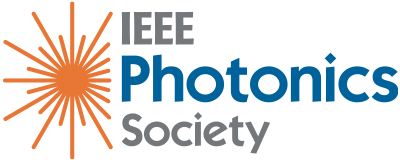In an editorial interview published in IEEE Journal of Selected Topics in Quantum Electronics, leading experts foresee a bright future for optical modulators and other photonic devices.
November 13, 2024
An illustrated panel of leading industry and academic experts from the USA shared their viewpoints in the interview
Despite being a mature technology with existence for over several decades, silicon photonic modulators face scrutiny from industry and academic experts. In a recent editorial interview, experts emphasize the need to explore alternatives beyond the traditional platforms. The discussion centered on innovative modulator materials and configurations that could cater to emerging applications in data centers, artificial intelligence, quantum information processing, and LIDAR. Experts also outlined the challenges that lie ahead in this field.
Optical and photonic modulators are technologically advanced devices that enable the manipulation of light properties—such as power and phase—based on input signals. Over the decades, scientists have researched and developed silicon photonic modulators with wide-ranging applications, including optical data communication, sensing, biomedical technologies, automotive systems, astronomy, aerospace, and artificial intelligence (AI).
However, these modulators face bandwidth limitations and operational robustness issues stemming from the fundamental properties of silicon and other practical constraints, as highlighted by a panel of leading industry and academic experts in a recent editorial interview.
The interview, titled “The Future of Optical Modulation,” was published in Volume 30, Issue 4 of the IEEE Journal of Selected Topics in Quantum Electronics on September 5, 2024. The interview features a panel of experts, including Professor Di Liang, who has been conducting research and product development on silicon photonics (SiPh) and heterogeneous photonic integration for over 17 years at UC-Santa Barbara, HP Labs, Alibaba Cloud Computing, and is currently at the University of Michigan. Dr. Mengyue Xu, an established researcher specializing in lithium niobate (LiNbO3) devices and silicon photonics at the University of Michigan; Dr. Long Chen, currently a Distinguished Engineer at Cisco and earlier at Acacia; Dr. Haisheng Rong, a Senior Principal Engineer and R&D Manager at Intel Labs; and Dr. Andreas Bechtolsheim, the co-founder of Sun Microsystems and Arista Networks, are some of the other notable experts featured in the interview.
The panel emphasized the necessity of moving beyond traditional platforms such as bulk silicon, indium phosphide, and conventional LiNbO3. They noted that diversity in materials used, fabrication processes, and photonic integrated circuit design is a crucial driver for innovation in this field. This shift is leading to the development of exciting new modulator materials, configurations, and integration technologies, including thin-film LiNbO3, III-V external modulated lasers, thin-film barium titanate (BTO)-based modulators, and vertical metal-oxide-semiconductor capacitor (MOSCAP) structures.
These new developments are expected to significantly impact numerous emerging next-generation applications, such as data centers, AI, quantum information processing, augmented reality/virtual reality, neuromorphic computing, frequency-modulated continuous wave LIDAR, microwave photonics, as well as metrology and spectroscopy. Notably, thin-film LiNbO3 modulators show promise for quantum-classical interfaces in superconducting circuits.
The panel of experts also notes several challenges that must be addressed, including technological bottlenecks, high production costs, non-uniformity in devices, substantial time investment, lack of standardized procedures, and more. Overcoming these issues requires the development of a comprehensive co-design capability and platform, which necessitates collaboration among photonic and electrical chip designers, vendors, foundries, as well as packaging and testing service providers.
Sharing his thoughts, Prof. Liang says, “The unprecedented surge in AI and the current global geopolitical situation have led to increased investment in semiconductor technology by governments, industries, and private sectors across all major economic regions in the world. This has resulted in more funding opportunities for collaboration between academia and industry. By overcoming the technical and interest barriers between these sectors and preparing young minds for the challenges ahead, we can ensure a continuous flow of innovations to propel the technology forward.”
Overall, industry and academic experts envision an exciting future for photonic devices, with advanced optical modulators and integrated technologies poised to revolutionize the field.
Reference
Authors Title of original paper Journal | Di Liang1, Mengyue Xu2, Long Chen3, Haisheng Rong4, and Andreas Bechtolsheim5 The Future of Optical Modulation IEEE Journal of Selected Topics in Quantum Electronics |
| DOI Affiliations | 10.1109/JSTQE.2024.3448914 1Electrical Engineering and Computer Science Department, University of Michigan, Ann Arbor, MI 48109 USA2Department of Electrical and Computer Engineering, University of Michigan, Ann Arbor, MI 48109 USA3Cisco, San Jose, CA 95134 USA4Intel Labs, Hillsboro, OR 97124 USA5Arista Networks, Santa Clara, CA 95054 USA |
Image Title: Optical modulator device
Image Credit: Professor Di Liang from University of Michigan
.





